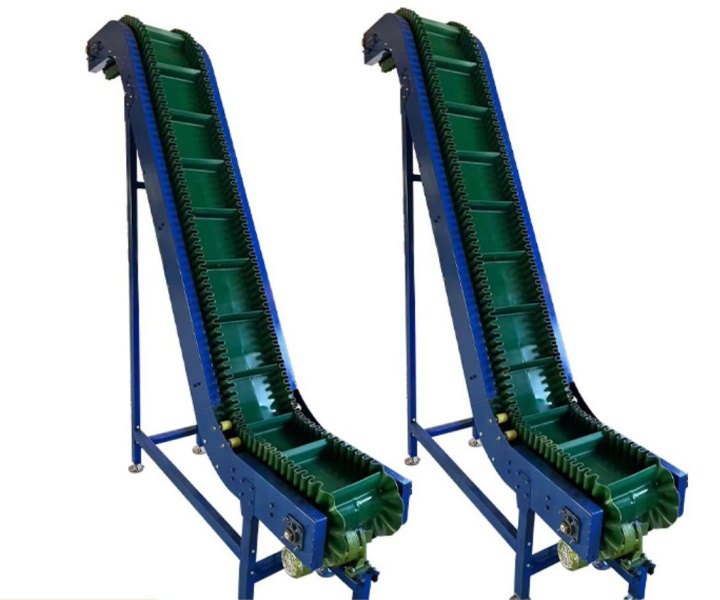
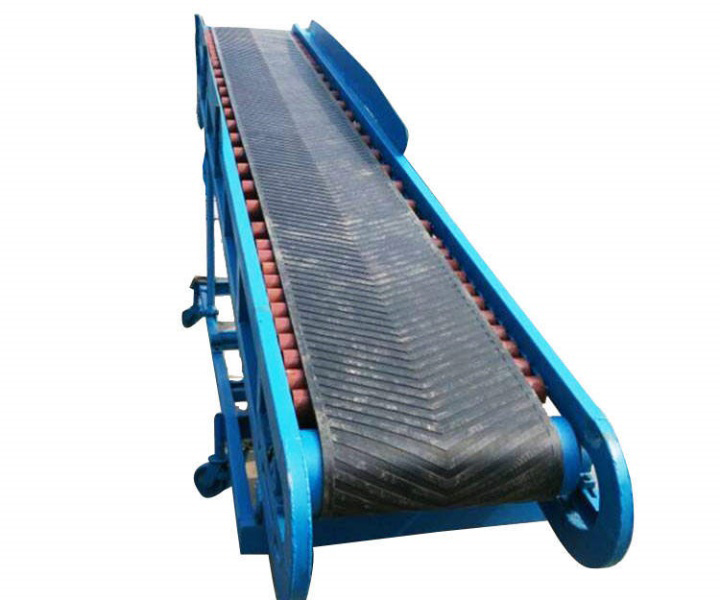
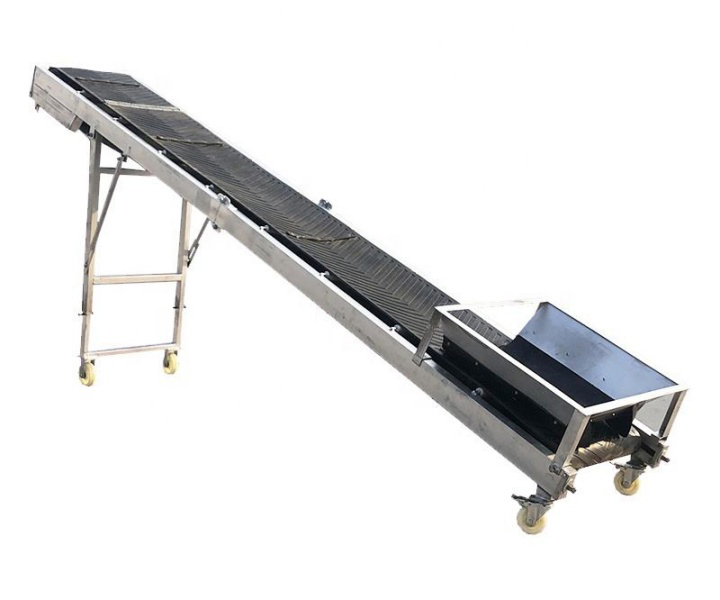
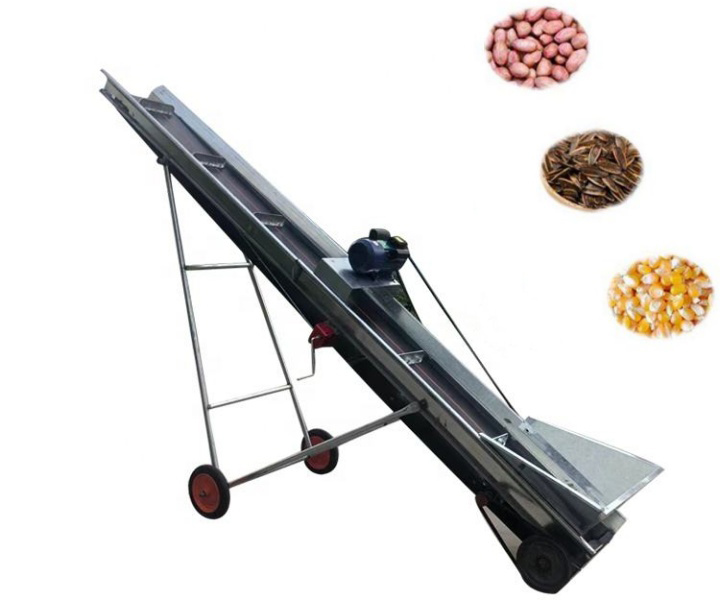
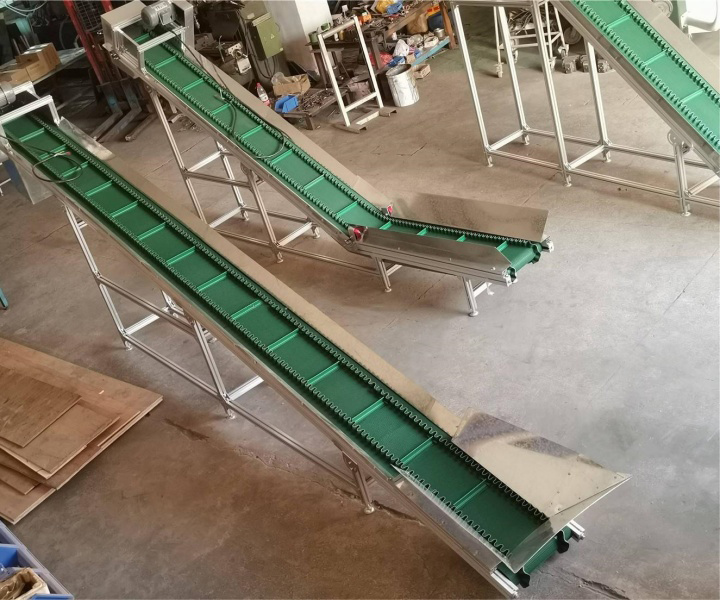





Grain belt conveyor is a device that drives the conveyor belt through a driving device and is used to transport grains, grain products, etc.
![]()
![]()
Price::$480.00 - $7,800.00/Set
Consult now and enjoy a 10% discount
Belt width: 400-2400mm
Speed: 0.8-4.0m/s
Conveying capacity: 30-3000t/h
Conveying length: <132meters
Conveying angle: 0-90°
Frame material: SUS304 stainless steel
Weight: 300 kg
Application: Grain belt conveyors are widely used in grain processing and warehousing and logistics fields to transport grains, grain products and other materials.
Commitment: Free Shipping/5 Days Delivery/30-Day Returns/Support Customization
Grain belt conveyor is a type of conveyor system used in the agricultural industry to transport grain and other bulk materials. It consists of a continuous belt made of rubber or fabric that is stretched between two or more pulleys. The belt rotates and moves along the conveyor's length, allowing for the efficient transportation of grain from one location to another.
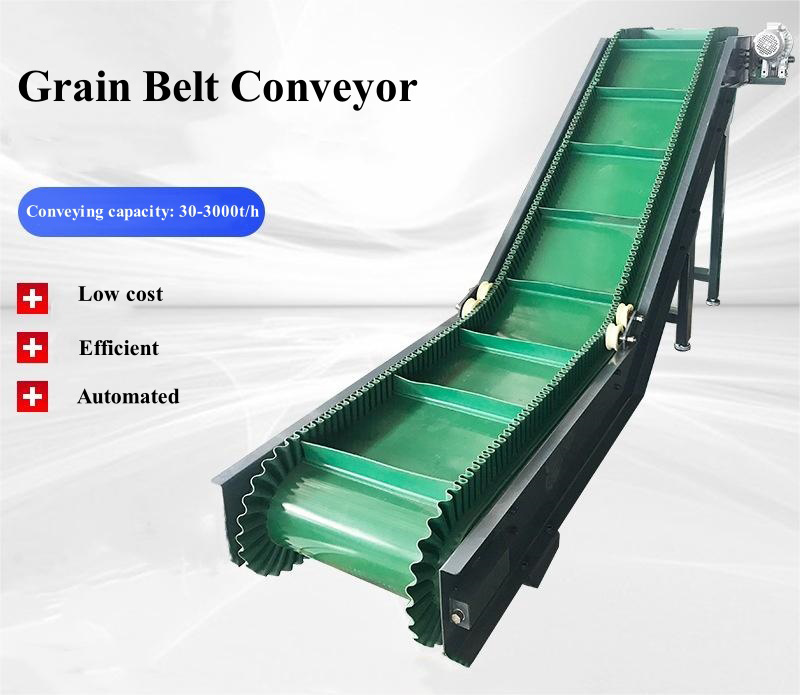
Grain belt conveyors are commonly used in grain elevators, storage facilities, and agricultural processing plants to handle various types of grains such as wheat, corn, rice, soybeans, and barley.

Grain belt conveyors are widely used in the agricultural industry for various applications related to grain handling and transportation. Some common uses for grain belt conveyors include:
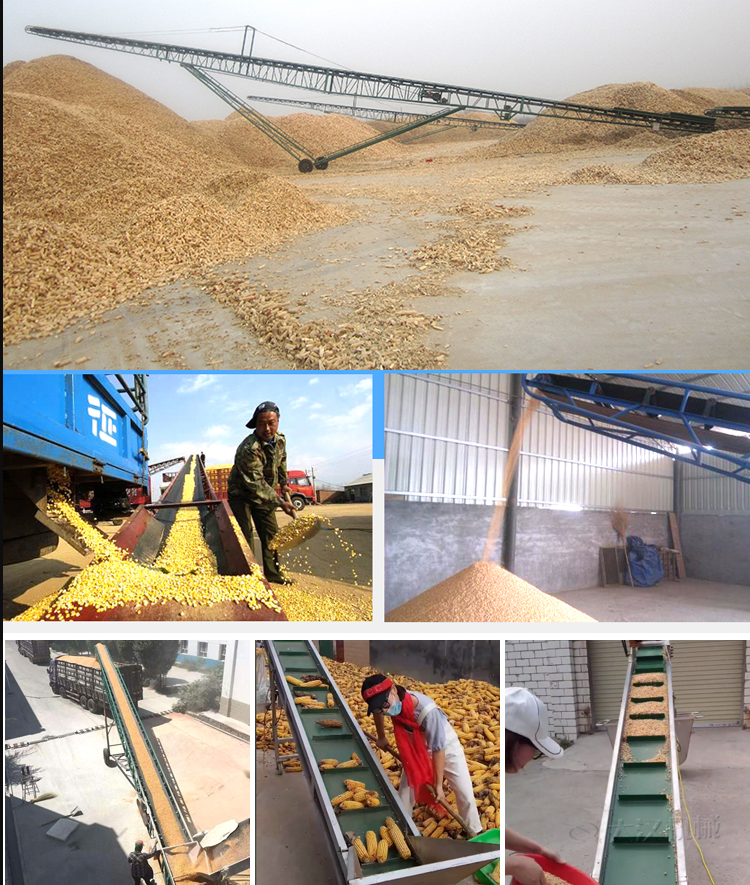
1. Grain storage: It is used for grain storage facilities, such as silos and granaries, to transport grain from the receiving area to the storage silo. They ensure a smooth and continuous flow of grain, allowing efficient filling and emptying of storage structures.
2. Grain Processing: Plays a vital role in grain processing plants such as flour mills, feed mills and ethanol production facilities. They transport grain between different processing stages, such as cleaning and sorting equipment, milling or grinding machines, mixing equipment and packaging lines.
3. Grain loading and unloading: used for grain elevators, ports, and docks, for loading and unloading grain from trucks, trains, and ships. They facilitate the transfer of grain from bulk storage containers to storage facilities and vice versa, ensuring efficient and safe loading and unloading operations.
4. Grain Transfer and Distribution: Used to transfer grain from one location within the facility to another. They can transport grain horizontally, vertically or at an incline to overcome elevation changes or to reach different processing or storage areas.
5. Biomass and biofuel production: Grain can be used in biomass and biofuel production facilities to transport agricultural residues such as corn stalks or wheat straw to processing equipment for conversion into biofuels or other value-added products.
6. Grain distribution and logistics: It is very important in the distribution and logistics of food products. They are used to move grain from production facilities to distribution centers, grain terminals or export facilities, ensuring efficient and timely delivery to end consumers or export markets.
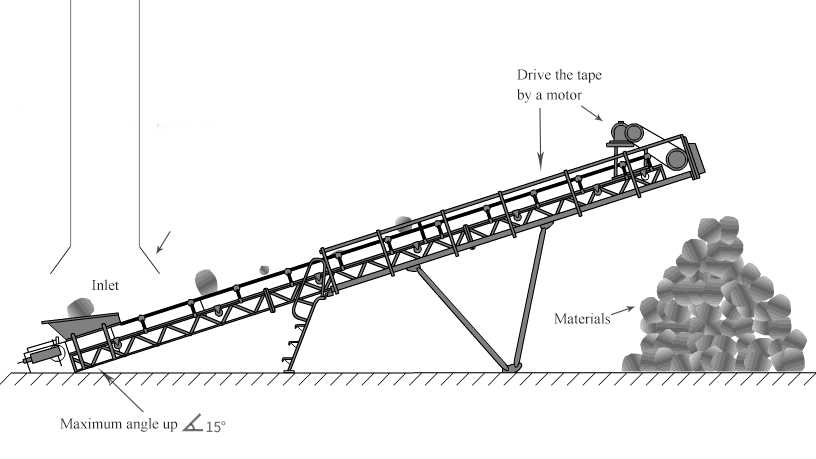
Loading: The grain to be transported is usually loaded onto the conveyor at the origin, usually via a hopper or chute. Grain can be poured directly onto the conveyor, or it can be fed onto the conveyor through other equipment such as bucket elevators or screw conveyors.
Belt Movement: After the grain is loaded onto the conveyor, the motor drives the belt to start moving. Power from the motor is transmitted to one of the pulleys (called the drive pulley), which drives the pulley and in turn rotates the belt. The belt moves continuously to form the conveying surface.
Grain Transport: When the belt moves, it carries the grain with it. The grain stays on top of the belt and is conveyed in the direction of belt movement. The belt surface is designed to provide grip and prevent grain from slipping or rolling off during transport.
Unloading: At the desired destination or transfer point, the grain is unloaded from the belt conveyor. This can be done in a number of ways, such as discharging the grain into a storage silo, diverting it to another conveyor system, or directing it into processing equipment.
Safe and reliable
It has stable operating performance and reduces the chance of accidents. The equipment adopts advanced safety control systems to ensure the safety of operators and equipment, making the production process more reliable and stable.
Efficient transportation
Provides a continuous and reliable method to transport large quantities of grain. The conveyor belt is designed for a smooth and consistent flow of grain, minimizing spillage and product damage.
Versatility
These conveyors can be configured to suit different layouts and handling requirements. They can be straight or curved, sloped or declined, and can be customized with a variety of accessories such as discharge spouts, transfer chutes and covers.
Gentle handling
The gentle and controlled movement of the conveyor belt helps prevent breakage and degradation of the grain during transportation. This is especially important for sensitive grains that require careful handling to preserve their quality.
Automation
It can be integrated into the automation system to achieve efficient material flow and seamless integration with other processing equipment. They can be equipped with sensors, controls and monitoring devices to optimize operations and ensure product safety.
Cost-effective and time-saving
By automating the grain handling process, belt conveyors help reduce labor requirements and increase operational efficiency. They reduce loading and unloading times, minimize bottlenecks and maximize productivity.
| Belt width (mm) |
Conveying length(m) Power(kw) |
Conveying speed (m/s) |
Conveying amount (t/h) |
||
| B400 | ≤10 | 12-15 | 15-30 | 1.25-2.0 | 30-60 |
| 3 | 3-4 | 4-7.5 | |||
| B500 | ≤10 | 12-15 | 15-30 | 1.25-2.0 | 40-80 |
| 3 | 4-5.5 | 5.5-7.5 | |||
| B650 | ≤10 | 12-15 | 15-30 | 1.25-2.0 | 80-120 |
| 4 | 7.5 | 7.5-11 | |||
| B800 | ≤10 | 12-15 | 15-30 | 1.25-2.0 | 120-200 |
| 4 | 7.5 | 7.5-15 | |||
| B1000 | ≤10 | 10-20 | 20-40 | 1.25-2.0 | 200-320 |
| 5.5 | 7.5-11 | 11-22 | |||
| B1200 | ≤10 | 10-20 | 20-40 | 1.25-2.0 | 290-480 |
| 7.5 | 7.5-15 | 15-30 | |||
| B1400 | ≤10 | 10-20 | <20-40 | 1.25-2.0 | 400-680 |
| 11 | >15-22 | 22-45 | |||
| B1600 | ≤10 | 10-20 | <20-50 | 1.25-2.0 | 600-1080 |
| 15 | 22-30 | 30-75 | |||
| B1800 | ≤10 | 10-20 | <20-50 | 1.0-2.0 | 200-1500 |
| 18.5 | 30-45 | 45-110 | |||
| B2000 | ≤10 | 10-20 | <20-40 | 1.0-2.0 | 1000-2000 |
| 22 | 45-55 | 55-132 | |||
| B2400 | ≤10 | 10-20 | <20-40 | 1.0-2.0 | 1500-3000 |
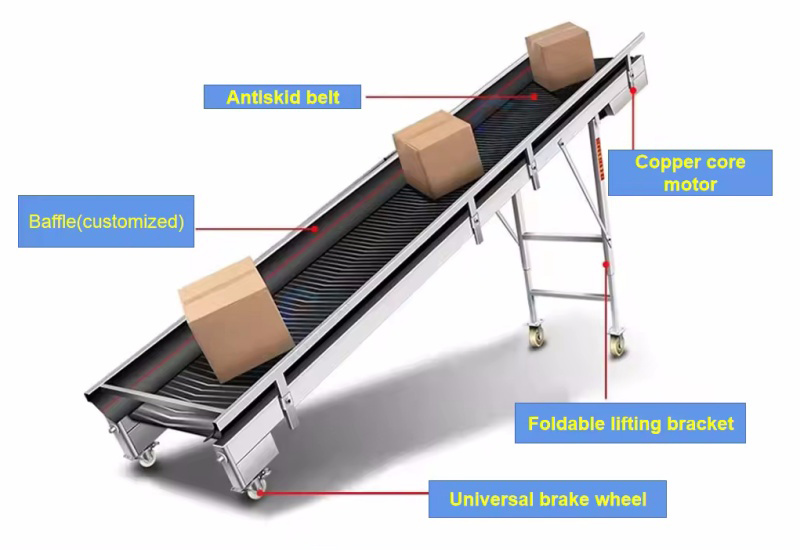
Grain belt conveyor is mainly composed of conveyor belt, conveying roller, transmission device, support frame, tensioning device, cleaning device, protective device, etc. The conveyor belt is responsible for transporting grain, the conveyor roller supports and drives the conveyor belt to run, the transmission device provides power, the support frame supports the entire structure, the tensioning device maintains the tension of the conveyor belt, the cleaning device removes debris on the belt, and the protective device ensures safe operation.
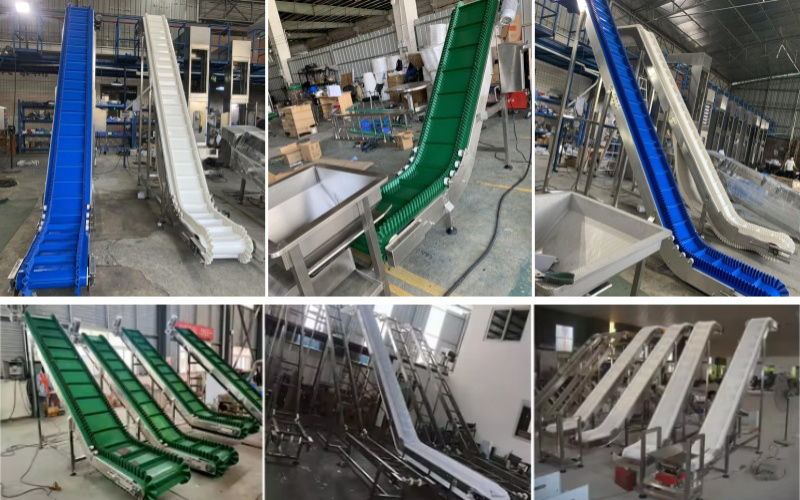
The conveying capacity of a grain belt conveyor refers to the amount of material conveyed per unit time. When conveying bulk materials, it is calculated based on the mass or volume of materials conveyed per hour.
The conveying capacity of a grain belt conveyor depends on several factors, including belt width, speed, inclination angle, grain type and density, etc. Generally speaking, the conveying capacity of grain belt conveyors usually ranges from tens of tons to thousands of tons per hour, and the specific figures may vary depending on the specific situation.
For example, a standard grain belt conveyor may have a conveying capacity of between 50 tons/hour and 300 tons/hour under normal operating conditions. For large industrial production lines, the conveying capacity may be higher, reaching thousands of tons or more.
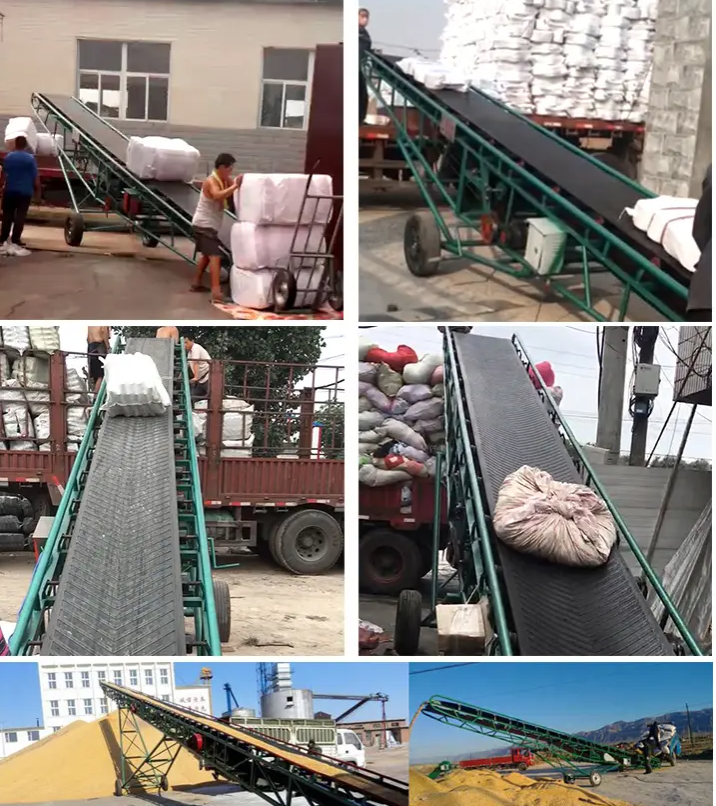
Address:China,Yanjin county forest park gate to the west 1000 meters north road.